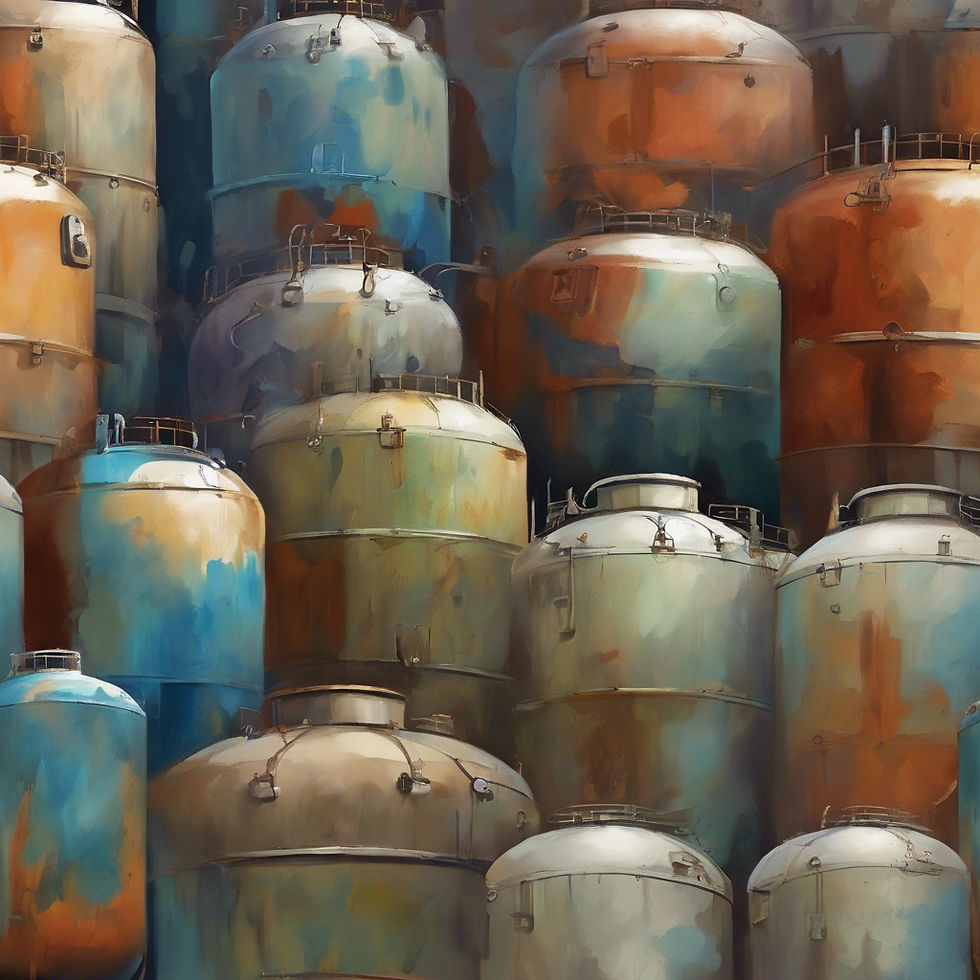Scrubbers vs. Separators: Unraveling the Design Differences
- morgancostigan
- Sep 9, 2023
- 2 min read
Introduction
In the realm of oil and gas processing, every piece of equipment has a distinct role to play, each with its unique design considerations. Two vital components, scrubbers and separators, exemplify this diversity. In this blog post, we'll delve into the differences between designing a scrubber for compression and a production separator, with a particular focus on gas velocities and mist eliminator internals. The Essential Roles of Scrubbers and Separators Scrubbers: Scrubbers are tasked with removing undesirable components, such as contaminants or impurities, from a gas stream. They are commonly used in gas compression processes to ensure that the gas entering the compressor is clean and free from unwanted particles. Separators: Separators, on the other hand, play a crucial role in the production phase of the oil and gas industry. Their primary function is to separate different phases of fluids, such as gas, oil, and water, allowing each to be processed or transported individually. Gas Velocity: Scrubber vs. Separator One significant design difference between scrubbers and separators lies in the acceptable gas velocities at their inlet and outlet points and through the body of the vessel. Scrubbers: For scrubbers used in gas compression processes, it's essential to maintain gas inlet and outlet velocities below 40 feet per second (ft/sec). This lower velocity is chosen to minimize pressure drop and the potential for erosion and damage to the internals of the scrubber, ensuring its longevity and efficient operation. Separators: In the case of production separators, higher gas velocities are acceptable. Gas inlet and outlet velocities can range between 70 to 80 ft/sec. This elevated velocity is permissible because separators are designed to handle the separation of different fluid phases and are generally less prone to erosion issues.
Mist Eliminator Internals: Scrubber vs. Separator Another key difference is in the design of mist eliminator internals, specifically the "k factor" used to characterize their performance. Scrubbers: Scrubbers typically use mist eliminators and while designing, a higher "k factor" can be used. With a mesh mist eliminator, the k factor is recommended to be between 0.24-0.35. For a vane pack, k factors of 0.5-0.65 are permissible. This higher value is chosen to enhance the coalescence of liquid particles suspended in the gas stream. The mist eliminator internals in scrubbers are optimized to efficiently remove fine mist and particulates from the gas, ensuring that the gas is clean and suitable for compression. Separators: Separators, on the other hand, often employ mist eliminators and set the "k factor" slightly lower. Mesh mist eliminators can be designed with a k factor between 0.18-0-0.35 and a k factor of 0.5 for standard vane packs. This is because the primary function of separators is to separate and collect the liquid phase (e.g., oil and water).

Conclusion
Designing scrubbers for compression and production separators involves distinct considerations, particularly regarding gas velocities and mist eliminator internals. While scrubbers require lower gas velocities and higher k factors to efficiently remove fine mist particles, separators can tolerate higher gas velocities and employ mist eliminators with lower k factors to handle the separation of liquid phases.
Understanding these design differences is crucial for ensuring the effective and safe operation of scrubbers and separators in the diverse applications of the oil and gas industry.



Comments